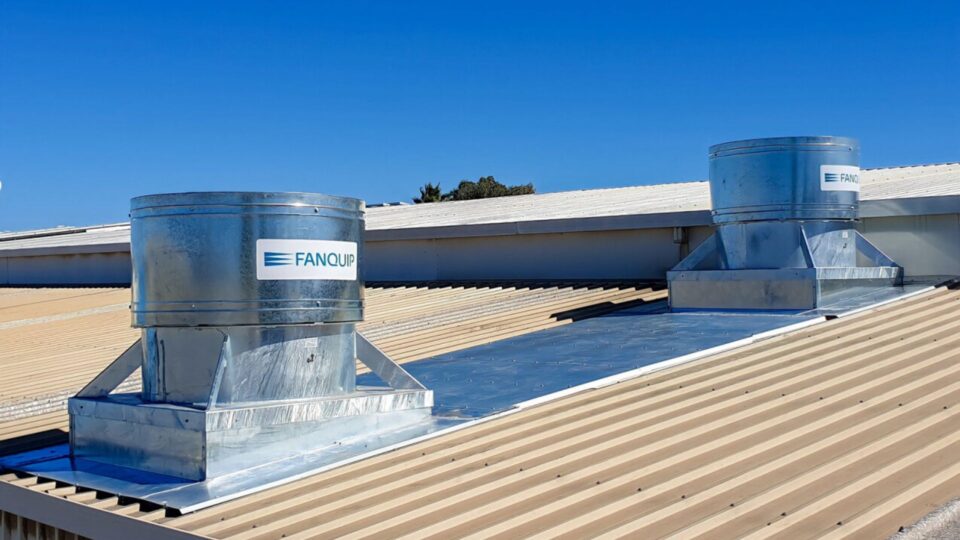Winter conditions can often encourage property dampness, leading to mould and other issues. 10-50% of properties in Australia were reportedly affected by moisture and mildew caused by poor ventilation and colder weather conditions.
What are the consequences of dampness during winter? And what can roof ventilation do to mitigate these effects?
Winter ventilation is an essential solution during winter. Read on as we discuss why roof ventilation during winter is vital and the best solutions to reduce humidity and dampness during winter.
Why is roof ventilation important during winter?
During the winter months, properties become colder. If there is no proper ventilation, they can also be humid. However, this humidity can condensate when the air is cool, leading to dampness. Damp and poor air ventilation in winter presents many issues for a property’s structural integrity, including:
- Mould and mildew – if a structure is not adequately ventilated, this can create an ideal environment for mould and mildew to grow and thrive. Mould and mildew can cause structural damage and cause respiratory health complications for building users. Black mould in particular is well known for causing long term illness.
- Structural damage – a moist environment can cause the weakening of integral property structures such as roof trusses, rafters, and joists. Walls, ceilings, and other structures can also be subject to weakening, warping, and rot.
- Roof degradation – when a roofing structure is too damp, this can cause the materials to weaken. Asphalt shingles are particularly vulnerable to warping and developing moss when exposed to dampness. Wooden roof components are also subject to warping and can rapidly deteriorate.
- Energy consumption – if there is poor ventilation and dampness within a property, this can result in inadequate airflow and temperature distribution. As a result, it can be more challenging to cool the building effectively in summer. Cold air pockets become trapped during winter, making heating systems less efficient.
- Aesthetics and property value – the musty odour caused by dampness and structural deterioration can make your property less attractive to prospective buyers. Peeling paint, stains, and warped structures will immediately present a red flag.
Roof ventilation is particularly essential during the winter months to prevent dampness. However, it is also beneficial during the summer months to promote airflow and ensure your HVAC systems are working efficiently.
Benefits of roof ventilation
Now that you know the consequences of poor roof ventilation, let’s discuss some of the benefits of roof ventilation. Here are your top reasons to prioritise roof ventilation fan installation for your property:
- More effective heating and cooling – you can support your HVAC and heating systems by ensuring proper ventilation. Air pockets and humidity can inhibit adequate temperature control.
- Better air quality – without mould, mildew, or musty odours, you can breathe clean air inside the property.
- Increasing the property’s lifespan – investing in roof ventilation can prevent structural damage caused by rot, warping, and dampness. Consequently, the property will have an improved lifespan, and you will not need to fund the cost of repairs.
How to ensure proper roof ventilation
You can invest in a roof fan system to ensure proper roof ventilation. There are many different types of roof ventilation, each designed to suit a specific property structure and size. Below is a list of the different kinds of roof fan units to provide proper roof ventilation.
Curb base hooded roof fans
A curb base hooded roof fan is designed for installation on the roof curb of industrial or commercial buildings – specifically, those with a flat roof. The hooded design prevents water ingress, and the fan extracts humidity and proper air circulation.

End wall exhaust fans
End wall exhaust fans should be installed near the ceiling of a building, on the end wall. The end wall exhaust fan is ideal for mitigating humidity, reducing unpleasant odours, and eliminating air pockets with proper airflow.

Profile base hooded roof fans
Profile base hooded roof fans are ideal for pitched and sloped roof structures. They do not interfere with the aesthetic appeal of a building, as they have a streamlined and discreet design. The fan helps to mitigate pollutants in the air and provides roof ventilation.

Vertical discharge roof fans
A vertical discharge roof fan is designed for application on a flat roof structure. They remove hot air, fumes, smoke, odours, and humidity from industrial spaces. The fan creates a vertical airflow to promote air circulation.

Wall plate exhaust fans
You can mount a wall plate exhaust fan directly on the building’s wall to provide ventilation and air extraction. This fan type is typically used to ventilate bathrooms, kitchens, and other high-humidity areas.

Side wall exhaust fans
You can implement a side wall exhaust fan solution for commercial and industrial spaces to eliminate humidity and provide exhaust for pollutants and contaminants. They are typically installed on the side wall of a building, close to the ceiling.

Summary
Roof fans can mitigate the humidity inside a building, reducing the potential for dampness, structural issues, mould, and poor air quality. Without a roof fan, the lifespan of your property will inevitably decrease, which is why it should be a top-priority installation.
If you need assistance selecting the most suitable roof ventilation solution, you can rely on our team of ventilation experts at Fanquip. We provide clean air solutions across all industry sectors, and our wealth of experience equips us to handle projects of any scope or scale. Contact us today.
